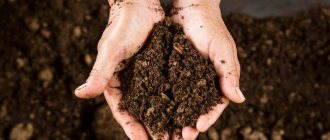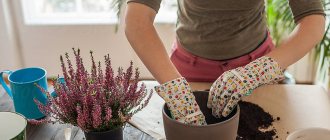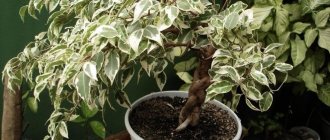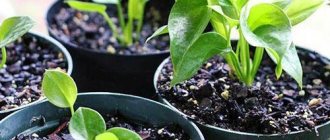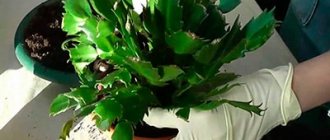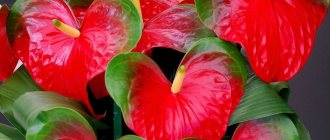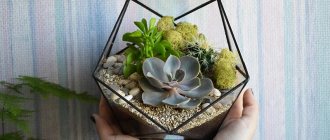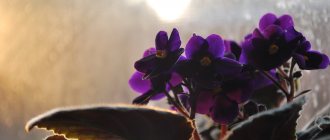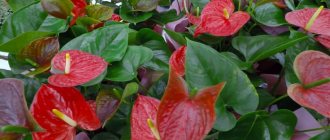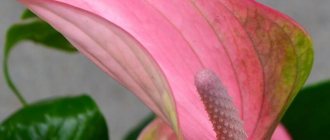Successful growing of anthurium largely depends on properly selected soil. The fact is that this plant is not quite ordinary. And if the bulk of green pets can be planted in universal soil, and then enjoy flowering, then this will not work with anthurium. He needs a special, specially selected soil for anthurium, designed for the specifics of its root system and the characteristics of natural growth.
Therefore, as soon as you have purchased an anthurium, you should think about what kind of land is suitable for it.
What kind of soil care is needed at home?
In the natural environment, representatives of the species are able to grow in various soils, including clayey and sandy loam.
But decorative house plants are demanding on the composition and consistency of the soil. For indoor plants, it is necessary to ensure good breathability of the substrate, as well as porosity and drainage. The soil must retain moisture. Did you know? In the mid-20th century, anthurium became a commercial crop in the Hawaiian Islands. At that time, there were almost 300 farms that specialized in growing the plant. Since then, the demand for these beautiful flowers has continued and they are exported all over the world.
The soil must have the following properties:
- looseness;
- no caking;
- presence of air pockets;
- lack of compaction ability;
- weakly acidic reaction - pH 5.5–6.5.
Anthurium roots are similar to orchid roots, so their soil requirements are the same - sufficient moisture and access to oxygen.
The substrate must include three main components:
- land (turf);
- land (forest);
- sphagnum.
Otherwise, you can improvise by adding other components to the mixture:
- peat;
- earth (leaf);
- river sand;
- pine bark;
- small pebbles;
- expanded clay
The addition of mineral elements - vermiculite or perlite - is also useful. In the natural environment, anthuriums grow in the forest floor, tree bark, foliage layer and other forest debris. Therefore, when growing a flower at home, you need to try to imitate the same conditions.
If you don’t want to make the soil yourself, you can try buying it. Unfortunately, this can be difficult. Few manufacturers produce specialized soil for anthuriums.
- Substrate for anthuriums “Polessky”. Contains: high-moor and low-lying peat, bark, river sand, coconut fiber and chips, perlite, charcoal.
- Set of substrate components Aroid “Gardens of Aurica”. Contains: turf soil, bark and pine needles, sand, sphagnum.
- Substrate Anthurium "ForPro". Composition: high peat, bark, charcoal, agroperlite.
Some soils for orchids with a similar composition (based on peat and bark) are also good for anthuriums. For example, we read the composition of a set of substrate components for orchids from Aurika Gardens: peat, pine bark and needles, charcoal, vermicompost, sphagnum. Why not primer for anthurium?
The only thing that can be added to such a substrate is universal soil. To adjust the mixture towards the correct ratio of bark and peat soil (1:1).
Universal soil for flowers will not work. Due to lack of air, the roots will begin to rot, which will lead to the death of the plant. The flower needs the maximum imitation of its natural habitat.
Consequences of incorrectly selected soil:
- Drying of the plant, despite abundant watering.
- Stunted growth.
- Uneven development of leaves and stems.
- Withering and drying of leaves.
- Lack of flowering.
Below we consider in what soil it is best to replant a flower from a store, in what soil it will grow well. Making your own mixture is the best option. The soil for growing anthurium is prepared by combining several components. The main thing is to maintain proportions so that the soil is loose and moderately dense. Otherwise, a mixture that is too light will not be able to hold the plant, and a mixture that is too dense will suffocate the roots.
What components are used:
- Peat - regulates acidity and enriches the soil with nutrients.
- Sand - lightens the substrate and prevents root rotting.
- Charcoal - provides prevention of fungal infections.
- Turf - makes the mixture porous, which increases breathability.
- Needles - imparts looseness to the soil and protects against chlorosis.
- Leaf soil - increases the nutritional value of the substrate.
- Sphagnum moss regulates water and air exchange.
Peat is sold in garden stores, in packages of 1-2 kg or more. You can also buy sand there, or prepare it yourself. If possible, use river, coarse-grained.
Needles are collected from the forest. The needles need to be washed in a bright pink solution of potassium permanganate, then treated with foundationazole. It is better to purchase turf and leaf soil in the store.
Soil recipes:
- Deciduous and coniferous soil, peat, sand in the ratio 1:1:1:0.5.
- Turf, sand, leaf humus in the proportion - 1:1:2.
- Sod, sand, sphagnum, peat - 2:1:1:4.
- Conifer bark, moss, peat, turf - 1:1:1:2.
After planting the flower, a layer of sphagnum is placed on top of the prepared soil. It retains moisture and protects the roots from drying out.
Nutrient components and their purpose
Today, several components are commercially available.
They are as follows:
- Needles . Adding needles to the substrate is not recommended for all plants, but it is useful for anthurium. Epiphytes prefer soil with medium acidity, and needles, as is known, not only loosen the soil, but also acidify it. It should be added sparingly to avoid oversaturation of the soil with resins.
- Compost . Compost is formed by decomposing manure over several years and in its pure form is too aggressive a nutrient element. It must be mixed with other types of soil for planting. People call compost humus.
- Sand . Sand provides plants with additional soil loosening. When replanting anthurium, it is preferable to use coarse sand.
- Expanded clay and brick chips . Brick or expanded clay chips are used to increase the air permeability of the soil and as drainage. The disadvantage of using brick chips is the presence of sharp edges on the chips, which can injure the roots of the plant.
- Sod land . Sod soil is a layer of earth formed as a result of the overheating of layers of turf with manure. Turf soil is a very useful component because... rich in nutrients and well suited for flowers that prefer acidic soil, its acidity = pH 5-6.
- Leaf soil . Leaf soil is formed by rotting tree leaves over two to three years. Such soil does not have extreme nutritional value, but it makes the soil more airy and breathable.
- Peat . Peat soil and coconut fiber give the soil a special looseness due to its fibrous structure. Peat soil is formed by the decomposition of peat over a period of one year and maintains the mineral balance of the substrate. Coconut fiber has the same properties. These two components are widely used in the preparation of planting mixtures for orchids, anthuriums and ferns.
- Sphagnum moss . Sphagnum moss is indispensable for epiphytic plants. By adding moss to the soil, the process of moisture exchange is regulated. Moss absorbs excess moisture and then releases it to the plant as needed. In addition, moss contains sphagnol, which prevents root rot, making it a kind of natural antiseptic. It is advisable to harvest moss in order to enrich the soil for replanting flowers in the fall, and add no more than 5% of the total mixture to the flowerpot.
- Charcoal . Charcoal is a natural antiseptic and protects plant roots from rotting.
- Perlite and vermiculite . Perlite and vermiculite enrich the soil with minerals, adding them in an amount of no more than 10% of the volume of the entire mixture.
- Bark . The bark can be used in pieces of different sizes or in the form of crumbs. It acidifies the soil and makes it lighter and airier.
Which substrate composition is best suited for planting a flower: preparation instructions
Below we consider in what soil it is best to replant a flower from a store, in what soil it will grow well. Making your own mixture is the best option. The soil for growing anthurium is prepared by combining several components. The main thing is to maintain proportions so that the soil is loose and moderately dense. Otherwise, a mixture that is too light will not be able to hold the plant, and a mixture that is too dense will suffocate the roots.
What components are used:
- Peat - regulates acidity and enriches the soil with nutrients.
- Sand - lightens the substrate and prevents root rotting.
- Charcoal - provides prevention of fungal infections.
- Turf - makes the mixture porous, which increases breathability.
- Needles - imparts looseness to the soil and protects against chlorosis.
- Leaf soil - increases the nutritional value of the substrate.
- Sphagnum moss regulates water and air exchange.
Peat is sold in garden stores, in packages of 1-2 kg or more. You can also buy sand there, or prepare it yourself. If possible, use river, coarse-grained.
Needles are collected from the forest. The needles need to be washed in a bright pink solution of potassium permanganate, then treated with foundationazole. It is better to purchase turf and leaf soil in the store.
You can prepare leaf humus yourself, but it will take 1.5-3 years. Foliage is collected from under fruit trees, put into bags and left on the site until it completely rots.
We invite you to watch a video on how to prepare soil for anthurium at home:
Soil recipes:
- Deciduous and coniferous soil, peat, sand in the ratio 1:1:1:0.5.
- Turf, sand, leaf humus in the proportion - 1:1:2.
- Sod, sand, sphagnum, peat - 2:1:1:4.
- Conifer bark, moss, peat, turf - 1:1:1:2.
After planting the flower, a layer of sphagnum is placed on top of the prepared soil. It retains moisture and protects the roots from drying out.
How to perform a transplant correctly
As a rule, having purchased an anthurium in a store, it is transplanted into a new pot using a different soil mixture. However, this should not be done earlier than 4 days later, so that he has time to adapt to the new conditions.
The transplant is done into a pot, which must be selected in advance. A container made of untreated clay is not suitable for this, since the roots may stick to its walls, which will complicate or even make the next transplant without damaging the roots impossible. A drainage system made of expanded clay is placed at the bottom of the container.
If a houseplant is replanted because it has grown and no longer fits in its original pot, then this process can be carried out using the transshipment method. That is, completely remove the anthurium along with the earthen lump and transfer it to a new container. This method is considered the most gentle, since the roots are not extracted from the soil, and therefore no harm is caused to them.
If the plant is sick, then it is necessary to remove it from the previous pot and inspect the roots. If necessary, remove damaged parts of the root system. The places where the cuts were made should be treated with activated carbon or soaked in a solution of potassium permanganate for half an hour, and the pot should be rinsed well.
When replanting, you should also take into account that the roots of the anthurium are abundantly branched; when replanting it, all gaps must be covered with earth. This method brings more stress to the plant; it may shed some of its leaves. Anthurium is replanted not only after purchase, there are a number of other reasons for this:
- young specimens of anthuriums should be replanted at least once a year, and adults - once every four years;
- the appearance of a white or rusty coating on the ground is a signal of soil depletion, then it is better to replant the plant;
- when signs of a plant disease appear, it must be removed from the pot in order to study the roots and remove diseased or rotten areas; then you need to replace the soil with fresh one;
- in case of intensive growth of anthurium, it should also be replanted if the pot has become too small.
One of the important conditions for successful growing of anthurium is timely replanting of the plant. To do this, you need to monitor its condition, and if any problems appear, immediately take measures to eliminate them.
Description of indoor plant
Anthurium belongs to herbaceous perennial plants of the aroid family. This delicate tropical flower has another name - flamingo. The leaves of the plant are dense, covered with a matte film, up to 20 cm long. The inflorescence is a spadix, around which there is a colored bract. It is rolled up into a tube so that the cob is clearly visible. Natural varieties have crimson bracts. Modern varieties and hybrids have a variety of colors, from blue to red, and there are varieties with a speckled cover. The flowers are fragrant.
After the flower fades, the perianth turns green and becomes a leaf. The flowers are small, with a complex pollination system. In their place, round-shaped fruits are formed. The seeds ripen up to one and a half to two months. They need to be sown immediately after harvest. Anthurium can be propagated by seeds after artificial pollination or vegetatively, by dividing the bush or by cuttings. The second method is much easier and more productive. Anthurium has about 100 beautifully flowering hybrids. If they are propagated by seeds, the properties of the mother variety are most often not transferred.
Despite the fact that there are about 500 species and varieties of this plant, the following are grown indoors:
- Anthurium Andre with red flowers of all shades or white. Andre Dakota is the most popular variety.
- Anthurium scherzerianum (Scherzer) up to 25 cm high and up to 40 cm wide. The leaves are arrow-shaped, the flowers are red, less often white or spotted. After flowering begins, they appear continuously and bloom several at a time. Flowering continues even in winter, but in summer the number of flowers is greater.
- Anthurium andreanum requires higher temperatures to grow, so it is not often found in apartments. The flowers are very large and stand cut for several weeks.
- Anthurium crystallinum is also picky about temperature and humidity. Valued for its beautiful velvety leaves with silver veins. The leaf shape is heart-shaped.
Soil requirements for spathiphyllum
Before selecting soil for a plant, you need to find out in what conditions it grows in nature. The homeland of spathiphyllum is the humid subtropics. It grows mainly along rivers, lakes or in wetlands. In such places, the soil is usually rich in humus and peat.
What should be the soil for spathiphyllum:
- loose;
- breathable;
- moisture permeable;
- light;
- fertile;
- slightly acidic.
Soil acidity should be within 5.5. If the acidity level is high, then dolomite flour, slaked lime or wood ash can be used to reduce it.
Note! To increase breathability, river sand is added to the substrate. Good drainage is also required - pebbles or expanded clay.
What soil composition is necessary for a flower of female happiness
Before buying soil, you need to carefully study the composition. But before that, you need to figure out which ingredients must be included in the soil mixture, and which should not be there. For successful cultivation, you need to know in advance what kind of soil spathiphyllum likes.
What soil is suitable for spathiphyllum and what should be included:
- sand, agroperlite or vermiculite;
- deciduous or turf land;
- peat;
- humus;
- superphosphate;
- charcoal.
The base is deciduous or turf soil. There should be more of it in the composition. Peat and humus are added in equal quantities. Ingredients such as sand, agroperlite and charcoal should occupy no more than 10% of the total mass of the substrate.
Advice! You can use ground bricks and small pieces of tree bark as a leavening agent.
Should the land for planting and replanting be different?
The soil for spathiphyllum, as well as for the closest relative of this flower, Anthurium, during planting and replanting may be the same in composition. It is not necessary to change the composition of the soil with each transplant. You can even leave the old drainage layer, just rinse it thoroughly before replanting the flower.
In summer, you can transplant the flower outside into open ground. It is planted together with the substrate in which it grew in a pot at home.
How to determine that the soil needs to be changed?
Alarm signals are easily identified by their appearance:
- Root shoots grow through drainage holes at the bottom of the pot.
- Pests (mites, aphids, cobwebs) were found on the surface of the top layer of soil and on the plant itself.
- When leaves, roots, and stems are infected with infections of rot, fungus, and spotting, the soil is partially or completely changed.
- The flower itself is cut off, replanted, and sent to quarantine.
Problems when growing anthurium associated with incorrectly selected soil
The growth and flowering of anthurium, its immune system, and susceptibility to diseases depend on the correctness of the selected soil. If the soil is unsuitable, this may result in a number of problems with the flower:
- Leaves turn yellow and fall off - the presence of mineral components in the soil in excess quantities.
- The appearance of brown spots on the leaf blades means the ingredients in the soil mixture were incorrectly selected.
- The leaves turn black - there is an excess of calcium in the soil.
Treatment of a flower includes removing damaged parts and normalizing conditions for its growth. The plant needs to be replanted in the correct soil.
Anthurium or male happiness is a flower that is not too whimsical, but requires a certain soil for its unusual, aerial roots. A properly selected soil mixture will help you grow a beautiful, often and abundantly flowering anthurium. It requires light and loose soil, enriched with macro and microelements, with the obligatory presence of drainage.
Soil disinfection
When replanting a flower, it is very important to carry out preventive treatment of the soil, because plants planted in self-prepared mixtures are threatened not only by fungi and bacteria, but also by the presence of pest eggs. There are several ways to disinfect the substrate:
There are several ways to disinfect the substrate:
- "Frost treatment" In winter, the substrate is taken out into the frosty air and left for 4-5 days. The air temperature should not be higher than – 5 – 7°C. Over this period of time, pathogenic organisms existing in the soil will die.
- Heat treatment. The soil is disinfected under high temperature. The processing rules are as follows: the soil is kept in an oven preheated to 80°C for an hour to provide reliable protection against the development of harmful microorganisms.
- Steam treatment. Another reliable way to neutralize soil is to treat it with steam. To do this, wrap the soil in a cloth and place it on a wire rack over a steam bath. This procedure must be carried out for at least an hour and a half.
- Treatment with a disinfectant mixture. For such treatment, you can use fungicides, or you can prepare your own disinfectant solution. To prepare it, dissolve 3 grams of potassium permanganate (potassium permanganate) in 5 liters of boiling water and treat the ground. It is recommended to use industrial biological mixtures - “Agat” or “Integral”. They include beneficial bacteria that destroy pathogenic microorganisms. The method of their use is indicated on the packaging.
It is important to know that substrate components such as peat and moss create favorable conditions for healthy soil flora and should not be processed. It is necessary to mix all parts of the soil after the treated components have cooled.
What kind of drainage is needed for growing?
The health and beauty of anthurium depends on the presence of drainage, because these plants do not tolerate stagnation of water in the root system and may die. To create optimal conditions for flower growth, you need to think about good drainage, only in this case excess water will drain away and the roots will breathe.
The following materials are suitable for preparing drainage:
- clay shards;
- broken brick;
- expanded clay;
- gravel;
- crushed stone;
- Styrofoam.
The most popular material for drainage is expanded clay; it is able to absorb excess moisture. These are baked pieces of clay that have a porous structure. You can buy it at flower shops.
When using other materials as drainage, you must follow the following tips:
Rejuvenation
Adult crops lose their decorative properties after some time. In this case, the lower leaves die, the trunk is exposed, and the leaves and flowers are crushed. In this situation, it is necessary to carry out anti-aging procedures.
To do this, it is worth cutting off the top of the anthurium, which contains several internodes, and immersing it in warm water
It is important to choose a bright and warm place. It is worth considering that temperatures less than +20 degrees will cause the bush to rot.
Under normal conditions, roots will appear in a short time. At this stage the plant can be moved to a pot. If the upper shoot of the anthurium has aerial roots, it can be immediately planted in a prepared container filled with high-quality soil.
Does anthurium need drainage?
Often gardeners have a question: “Do anthuriums planted in a mixture of bark and peat need drainage?” The answer is clear: drainage is vital, because stagnation of water in a flowerpot is destructive for them. Drainage can be made from expanded clay, brick, large pieces of bark and even foam. The drainage pockets should be large enough, so use large pieces of your chosen material. Be sure to disinfect the material for making drainage, after scalding it several times with boiling water.
There is no need to replant anthurium often, but a serious approach to this issue is required. If you follow all the recommendations and choose the right soil, the tropical guest will thank you not only with lush color, but also cleanse the air of your home from such harmful impurities as xylene, ammonia and formaldehyde.

